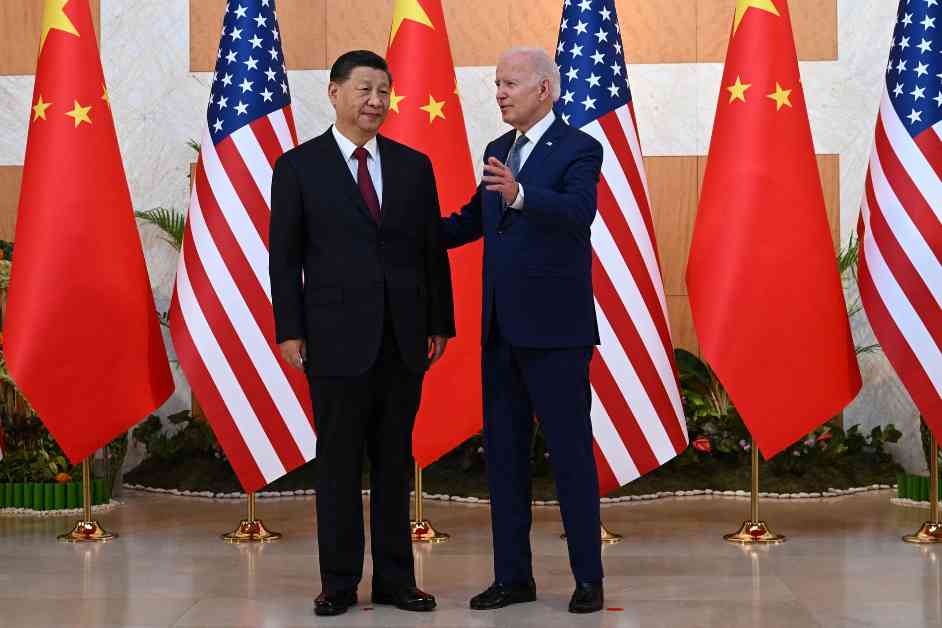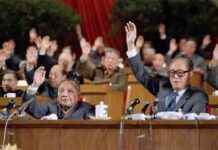Navigating America’s Strategy Towards China: Understanding the End Game
In a recent statement, U.S. National Security Advisor Jake Sullivan addressed the ongoing questions surrounding the end state of U.S. competition with China. He emphasized that the Biden administration does not foresee a transformative end state comparable to the collapse of the Soviet Union. Instead, the administration has outlined three key pillars in its approach to China: investing, aligning, and competing. The investing aspect focuses on domestic initiatives within the United States, while aligning involves collaboration with allies and partners. The only explicit reference to China in the Biden administration’s strategy is the aspect of competition. However, it is crucial to note that competition is not an end in itself but rather a reflection of the current circumstances. As Kurt Campbell, White House Coordinator for the Indo-Pacific, has cautioned, “competition is not itself a strategy.”
The Allure of Steady States
President Joe Biden, in introducing his 2022 National Security Strategy, pledged to “win the competition for the 21st century.” Nevertheless, the definition of winning in this context remains ambiguous. Senior officials in the Biden administration have rejected the idea of aiming for a specific “end state” concerning China. Instead, figures like Kurt Campbell and Jake Sullivan advocate for striving towards a steady state of clear-eyed coexistence that aligns with U.S. interests and values. This approach rejects the notion of definitive end states in favor of accepting competition as a condition to be managed rather than a problem to be solved.
The Biden administration’s stance against identifying an end state for U.S. strategy on China is supported by several compelling arguments. Firstly, addressing the “China challenge” is considered a misnomer since even a shift in governance in Beijing would present new challenges. Political science research suggests that democratization in China could potentially escalate tensions with the United States. Therefore, focusing on steady states, as endorsed by experts like Richard Fontaine, may be more prudent. Secondly, the lack of consensus on the ideal strategy among U.S. policymakers could hinder the selection of an end state. Given the diversity of perspectives within the Biden administration and beyond, agreeing on a singular end state may prove challenging. Lastly, pursuing a specific end state could alienate allies and partners, as certain objectives may not align with the interests of key stakeholders. Therefore, the Biden administration’s emphasis on steady states rather than end states reflects a pragmatic approach to managing relations with China.
The Necessity of End States
Despite the Biden administration’s reluctance to define an end state for its China strategy, proponents argue that having a clear objective is crucial for assessing the success or failure of current strategies. The ambiguity surrounding the concept of managed competition with China makes it challenging to evaluate progress or determine strategic priorities. Additionally, without a defined aim, policymakers may struggle to make difficult strategic decisions, such as economic de-risking or diplomatic engagements. Clarity on the ultimate objective would provide a framework for assessing trade-offs and guiding policy choices effectively. Moreover, while U.S. leaders have been vocal about what they do not want in the U.S.-China relationship, they have been less explicit about their positive vision for the future. This lack of a defined positive agenda may lead to skepticism among international observers and uncertainty among policymakers regarding America’s strategic goals.
The Impracticality of a Unifying Objective
The rejection of end states by the Biden administration stems from the realization that no single end state would be feasible or acceptable to both the American public and key allies and partners. The collapse of the Communist Party in China, advocated by some, poses significant challenges, as Washington lacks the leverage to influence China’s domestic governance model. Explicitly aiming for regime change could strengthen the Communist Party’s grip on power and face opposition from allies and partners. On the other hand, the idea of a great power condominium with China is deemed unrealistic given Beijing’s assertive behavior on the global stage. The shift away from engagement towards stabilizing the relationship indicates a recognition of the limitations of pursuing a cooperative relationship with the current Chinese leadership.
The Need for Phased Objectives
While end states may be unattainable in the short term and steady states may lack long-term appeal, a phased approach presents a viable path forward. This approach entails maintaining a stable steady state in the near term while anticipating potential changes in China’s behavior or governance in the future. By adopting a phased strategy, the United States can navigate the complexities of the U.S.-China relationship, allowing for flexibility in response to evolving circumstances. In the short term, efforts to establish a durable steady state should focus on enhancing cooperation with allies, strengthening deterrence, and mitigating the risk of conflict with China. In the long term, the United States should remain open to the possibility of fundamental changes in China, while exercising patience and vigilance in managing the competition.
As the Biden administration continues to refine its approach to China, it is essential to consider the implications of different strategic objectives. While the concept of steady states offers a pragmatic framework for managing competition with China, the absence of a clear end state may limit the effectiveness of U.S. strategies in the long run. By embracing a phased approach that combines elements of stability and strategic patience, American policymakers can navigate the complexities of the U.S.-China relationship while working towards a more durable and sustainable outcome. Ultimately, the ability to articulate a clear and coherent vision for America’s strategy towards China will be essential in shaping the future of U.S. foreign policy in the Indo-Pacific region and beyond.

















